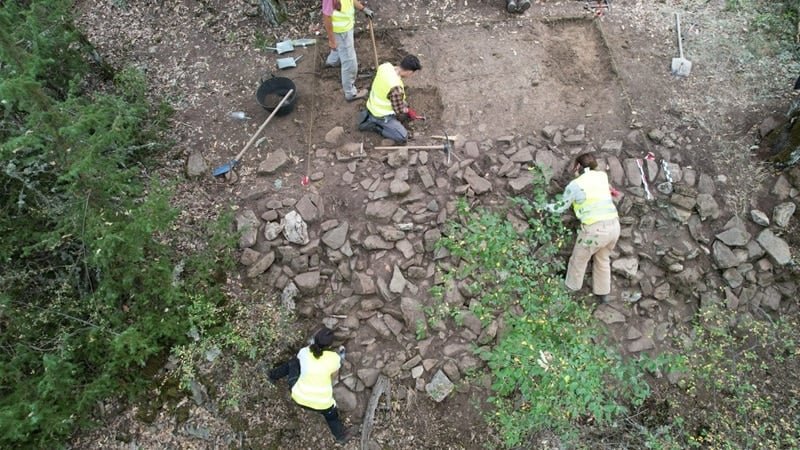
An ancient fortress and settlement, situated at an altitude of 1,150 meters (3,770 ft) in the heart of the Pindus Mountains, has been systematically documented and mapped during the first research cycle of the Philippaioi Archaeological Program (Phili.P).
The program is a collaboration between the National and Kapodistrian University of Athens (NKUA) and the Ephorate of Antiquities of Grevena (Ministry of Culture), directed by Associate Professor of Classical Archaeology, Nikolaos Dimakis.
Initial findings at the ancient fortress of Pindus
Archaiologia.gr reports that field research conducted in September 2025 focused on an area near the settlement of Philippaioi, Grevena, characterized by dense forest cover and challenging terrain.
Using a combination of advanced methods—including LiDAR, geophysical surveys, extensive surface investigation, and test trenches—the team documented a fortified area spanning approximately 90 stremma (about 22 acres). The complex is built on successive terraces and surrounded by imposing walls.
Key discoveries from this phase include:
- Defensive Architecture: Well-preserved sections of the fortification walls, built with expertly crafted dry-stone masonry, measure 1.20–1.80 meters (4–6 ft) in width and up to 2.5 meters (8 ft) in height. Their form is characteristic of a regional “koine” (common style) of ancient wall-building specific to the mountainous areas of Grevena.
- Burial Sites: Tombs were identified on plateaus next to the river, indicating the organized and long-term use of the landscape.
- Artifacts: The movable finds primarily date to the Hellenistic period and include pottery, figurines, coins, loom weights, and metallurgical processing residues. While Hellenistic use is dominant, the evidence does not rule out an earlier founding phase or continued use in later periods.

The research team comprised twenty undergraduate, postgraduate, and doctoral students from Greece and international universities (including the United States, Belgium, and Germany).
Specialists from NKUA’s Departments of History and Archaeology, Biology, and Geology provided essential contributions to the documentation, analysis, and interdisciplinary interpretation of the finds.
The Phili.P program is already yielding academic results, with three doctoral dissertations and two master’s theses directly linked to the research.
The project is the result of a cultural development agreement (2025–2028) between NKUA, the Ministry of Culture, and the Region of Western Macedonia (Grevena Regional Unit).

Future goals
The 2026 season is scheduled to include extended geophysical surveys, luminescence analyses, coring, and further test trenches. These efforts aim to fully understand the morphology and evolution of both the fortified hill and the riverside plateau.
The broader objectives of Phili.P are to enrich knowledge of the historical topography and the social and political structures of ancient Western Macedonia.
Furthermore, the program seeks to establish the Grevena region as a model for the Archaeology of Mountainous Landscapes, strengthening the connection between academic research and local communities, and contributing to the sustainable promotion of the region’s cultural heritage.


